
|
<<Back |
Dublin, Ireland
November
1-9, 2006 |

|
|
|
| We were firm in our decision
to only add trips to this chronicle in which both of
us participated. However Dís father F recently turned
75, so D and his brother B organized a guys-only trip
to Dublin with ambitious plans of conducting the ultimate
pub crawl Ė 75 pubs in a week. So while J went on a
trip of her own to the Caribbean, she gave D a special
dispensation to provide this write-up. |
|
|

St. Stephen's Green.
|

The River Liffey.
|
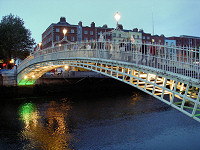
Ha'penny Bridge.
|
|
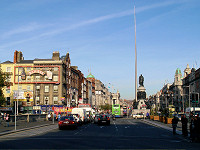
A view down O'Connell Street.
|

Georgian doors.
|
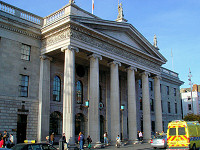
Dublin's General Post Office.
|
|
|
The city of Dublin was principally
founded by Vikings in the 9th century when they established
a settlement where the Liffey and Poddle rivers met
to create a black pool or dubh lynn. The fact
that the largest city of this Celtic nation was founded
by foreigners can be seen as a barometer for Irelandís
turbulent history. The Irish populace has been subjected
to foreign rule (Norse, Normans, and English) for
the better part of their existence. Dublin was the
scene of a key attempt at self-rule when, gunmen took
over the General Post Office in April 1916 and read
a proclamation declaring a sovereign and independent
Irish Republic. The Easter Rising was abruptly quashed
by a British gunboat that battered the surrounding
area, but the seeds of revolution had been sown. The
signing of the Anglo-Irish treaty, effectively giving
the industrial northern counties to the British in
exchange for self-rule over the remainder of the island,
caused a rift among the Irish people that ultimately
erupted into civil war. The Republic of Ireland was
officially recognized in 1949 and severed all ties
with Great Britain. The wounds still run deep, however,
and the Irish Republican Army has terrorized British
soldiers in an attempt to reunify the Emerald Isle.
Thankfully, the conflict has been in a state of détente
over the past few years.
|
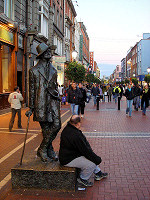
Take a load off at the James
Joyce statue on North Earl St.
|
|

Trinity College.
|
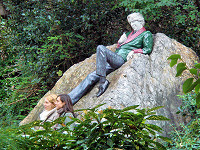
Oscar Wilde leers at some passers-by.
|
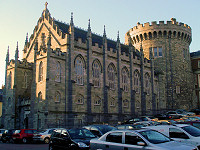
Dublin Castle.
|
|
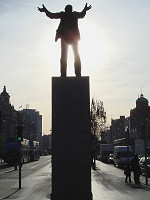
Jim Larkin greets the sun on
O'Connell Street.
|
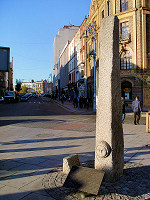
The Viking Steine.
|
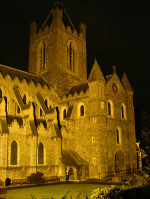
Christ Church Cathedral.
|
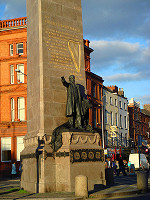
Charles Stewart Parnell.
|
|
|

The Boyne River.
|
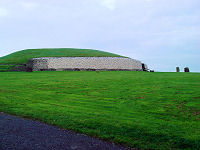
Newgrange.
|

St. Patrick's Church.
|
|
|
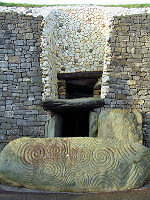
Entrance to the passage at Newgrange.
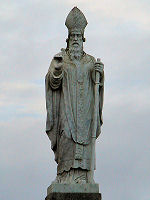
St. Patrick.
|
North of Dublin, along the
Boyne River valley, is a string of Neolithic monuments
built by the first people to inhabit this island.
We felt that it would sit better with our womenfolk,
if we infused at least some culture into our extended
pub crawl, so we booked a bus tour with the entertaining
Mary Gibbons. Our first stop was the grassy Hill of
Tara, the former heart of Irish power and mysticism.
At one time, it served as a coronation site for 142
kings of Ireland and even accommodated colleges of
military, history, and law studies. Today, it is no
more than a collection of hilltop furrows and mounds
from which one can allegedly see 23 of Irelandís 32
counties. We moved on to the town of Slane, nestled
along the Boyne River, where in the distance we could
see the 18th century Slane castle, now a venue for
concerts, and the Hill of Slane on which St. Patrick
himself celebrated Easter by lighting a Paschal fire
large enough for the pagan kings to see from Tara.
We continued along the Boyne
picturing the scene in 1690 when the Catholic James
Stuart, pretender to the English, Scottish, and Irish
thrones, had his showdown with the Protestant William
of Orange. The Protestant victory signaled a renewed
persecution of Catholics in Ireland that would last
for centuries. Soon we arrived at the Neolithic burial
site of Newgrange. To preserve the tomb, entrance
is limited to a fixed number of tourists each year,
but we were fortunate enough to be on one of the tours
that is taken inside the mound. We were second-guessing
just how lucky we actually were as we stood cramped
in the center of the mound with 22 other fortunate
souls after squeezing through the 60 ft entrance passage.
As with seemingly all other Stone Age chambers, Newgrange
is also specifically aligned with the sun at the winter
solstice, but the white quartz face stones that glow
orange in the setting sun make it unique.
|
|
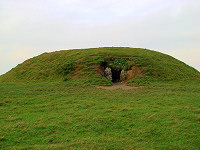
Mound of the Hostages.
|

A celtic cross.
|

The Royal Seat at Tara.
|
|
|
|
When you imagine Dublin, you
canít help but think of pubs. A contraction for "public
house", these establishments have long been gathering
points for writers, thespians, politicians, revolutionaries,
and just your average guy looking for refreshment.
Perhaps nowhere else is the pub woven into the fabric
of life as it is in Dublin. There are pubs throughout
this fair city from the overpriced touristic strip
along Temple Bar to the working manís refuge of Noel
Leonardís near the Guinness brewery. There are pubs
of literary fame such as the Oval and Davy Byrnes
from Joyceís Ulysses, McDaids where Brendan Behan
often over-imbibed, and James Toner where William
Butler Yeats reputedly had his first and only pint
in a pub. Near the famed Abbey Theatre, the Flowing
Tide has long been a meeting place for actors and
playwrights as was Nearyís near the Gaiety Theatre.
There are also key historical pubs such as the Brazen
Head, a place of drink since the Norman occupation,
Patrick Conway, the Old Stand, and the Bailey, all
of which have connections to Irish politics.
The foundation of any successful
pub crawl is preparation, and ours could certainly
have benefited from just that. The only semblance
of research we could muster was a comprehensive list
of pubs in the greater Dublin area Ė 974 of them to
be exact. Having supplemented our list with a good
city map, we were on our way. To hit our quota of
10 pubs per day, we often found ourselves arriving
at an establishment just as it was opening, and we
had to resist the temptation to linger and have a
second pint. Pacing ourselves was critical to success.
One last key element is maintaining an open mind.
Not all Dublin pubs are going to resemble the archetypal
Irish country pub. They range from traditional (Doheny
& Nesbitt) to Georgian (Maguires) to Victorian
(the Bank) to hip (Panama). While recent years have
seen the emergence of mega-pubs like Fitzsimons, the
Porter House, and Messrs. Maguire, there are still
some gems like the Pale, Stagís Head, Dame Tavern,
and Broganís Bar full of the craic for which
Ireland has always been known. In the end, we were
up to the challenge, having toasted our undertaking
in no fewer than 80 pubs.
|
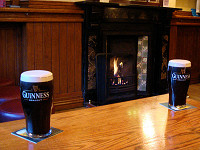
Ireland's black gold.
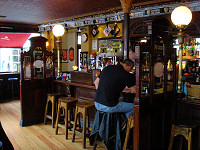
Always room for one more.
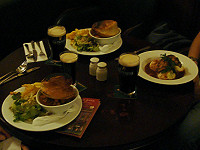
Pub grub.
|
|
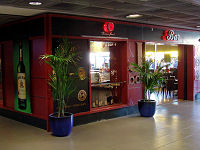
The Airport Bar
|
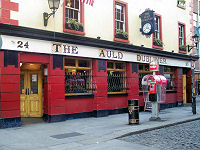
The Auld Dubliner
|
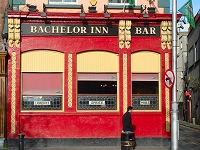
Bachelor Inn
|
|
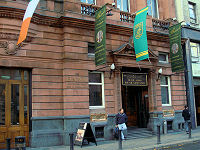
The Bank
|
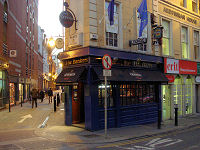
The Bankers
|

The Boar's Head
|
|

The Brazen Head
|

Brogan's
|
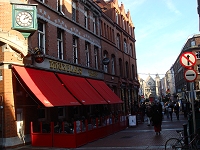
Bruxelles
|
|
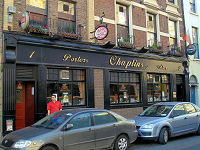
Chaplin's
|
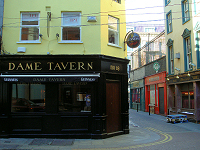
Dame Tavern
|
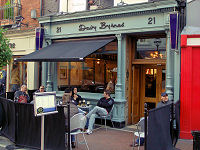
Davy Byrnes
|
|
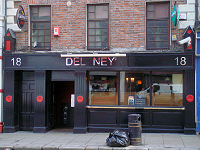
Delaney's
|

Doheny & Nesbitt
|
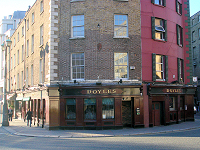
Doyle's
|
|
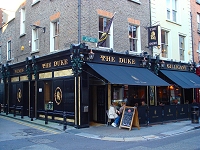
The Duke
|
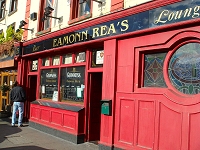
Eamonn Rea's
|
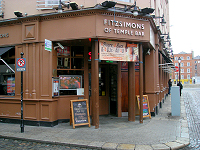
Fitzsimons
|
|
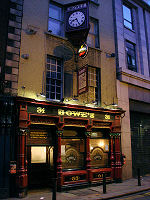
Bowe's
|
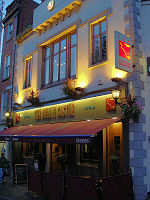
The Bull & Castle
|
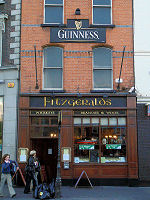
Fitzgeralds
|
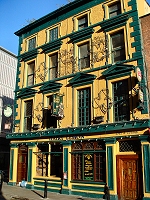
Hairy Lemon
|
|
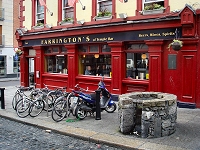
Farrington's
|
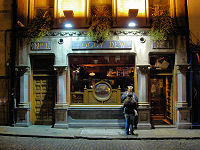
Foggy Dew
|

Foley's
|
|
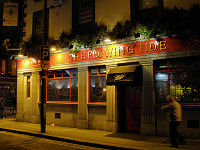
The Flowing Tide
|
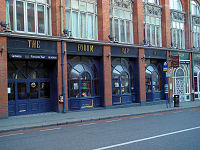
The Forum
|

Gin Palace
|
|

The Globe
|
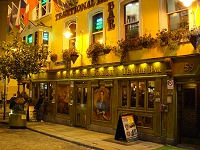
The Oliver St. John Gogarty
|
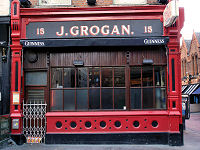
J. Grogan
|
|
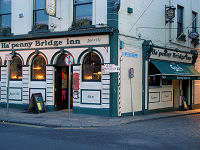
Ha'penny Bridge Inn
|
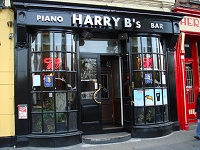
Harry B's
|
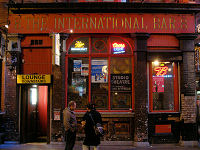
The International Bar.
|
|
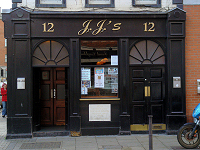
J. J.'s.
|
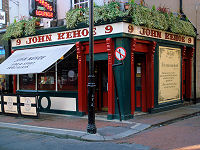
John Kehoe
|
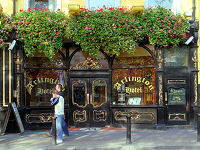
Knightsbridge
|
|
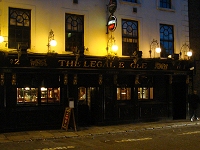
The Legal Eagle
|
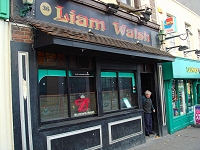
Liam Walsh
|
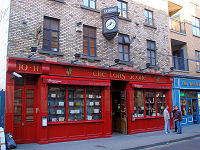
The Long Stone
|
|
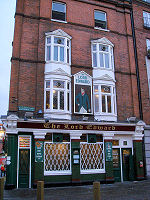
The Lord Edward
|

Madigan's
|
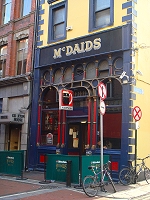
McDaids
|
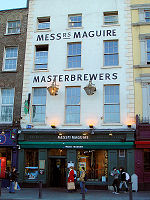
Messrs. Maguire
|
|
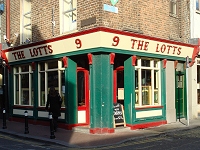
The Lotts
|
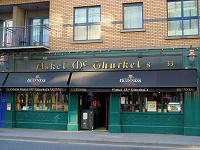
MacTurcaill's
|
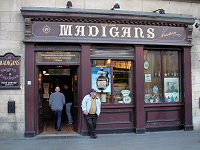
Madigan's
|
|
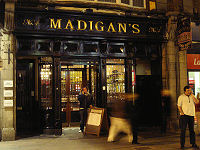
Madigan's.
|
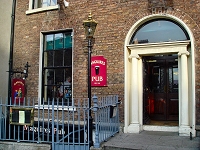
Maguires
|
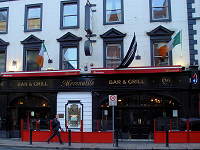
The Mercantile
|
|
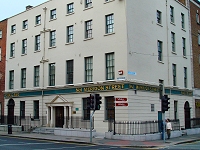
No.1 Merrion Street
|
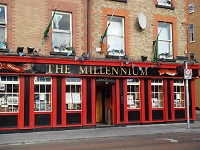
The Millenium
|
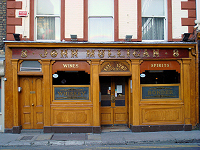
John Mulligan's
|
|
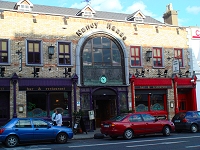
Nancy Hands
|
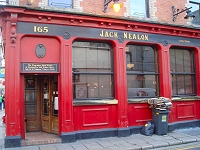
Jack Nealon
|
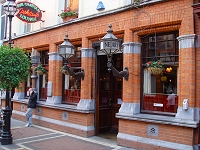
Neary's
|
|
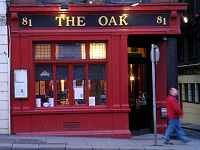
The Oak
|
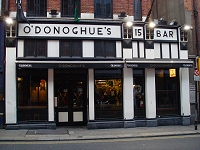
O'Donoghue's
|
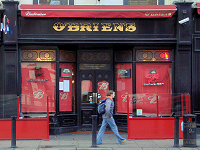
O'Brien's
|
|
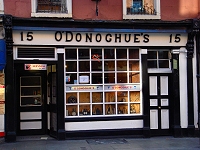
O'Donoghue's
|
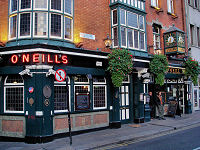
O'Neill's
|
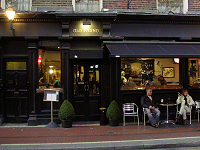
The Old Stand
|
|
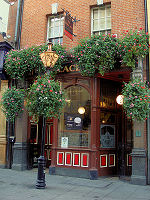
The Palace
|
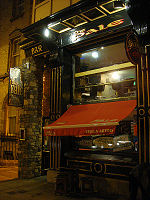
The Pale
|
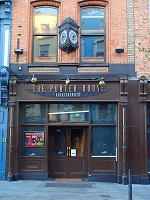
The Porter House
|
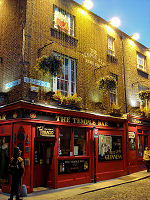
The Temple Bar
|
|
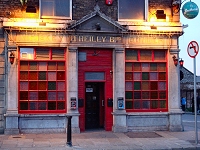
O'Reilly Brothers
|
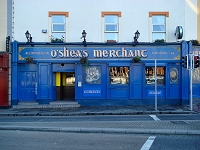
O'Shea's Merchant
|
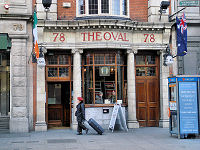
The Oval
|
|
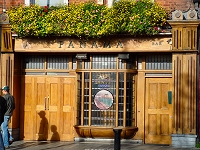
Panama
|
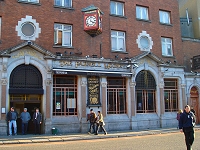
Parnell Mooney
|
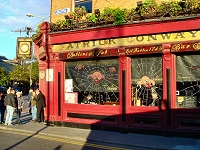
Patrick Conway
|
|
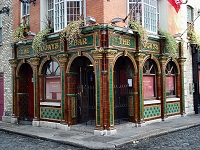
The Quays
|

Peter's Pub
|
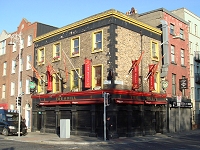
The Quill
|
|
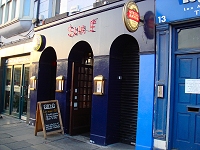
Sin É
|
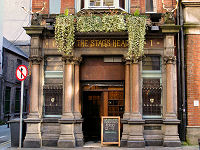
The Stag's Head
|
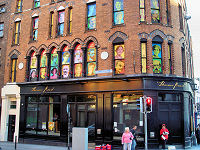
Thomas Read
|
|

James Toner
|
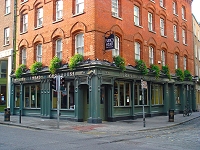
The Turk's Head
|
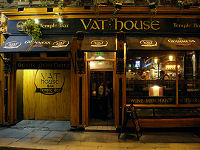
The Vat House
|
|
Copyright © 2005 JnDsTravelog.com. All rights reserved. |